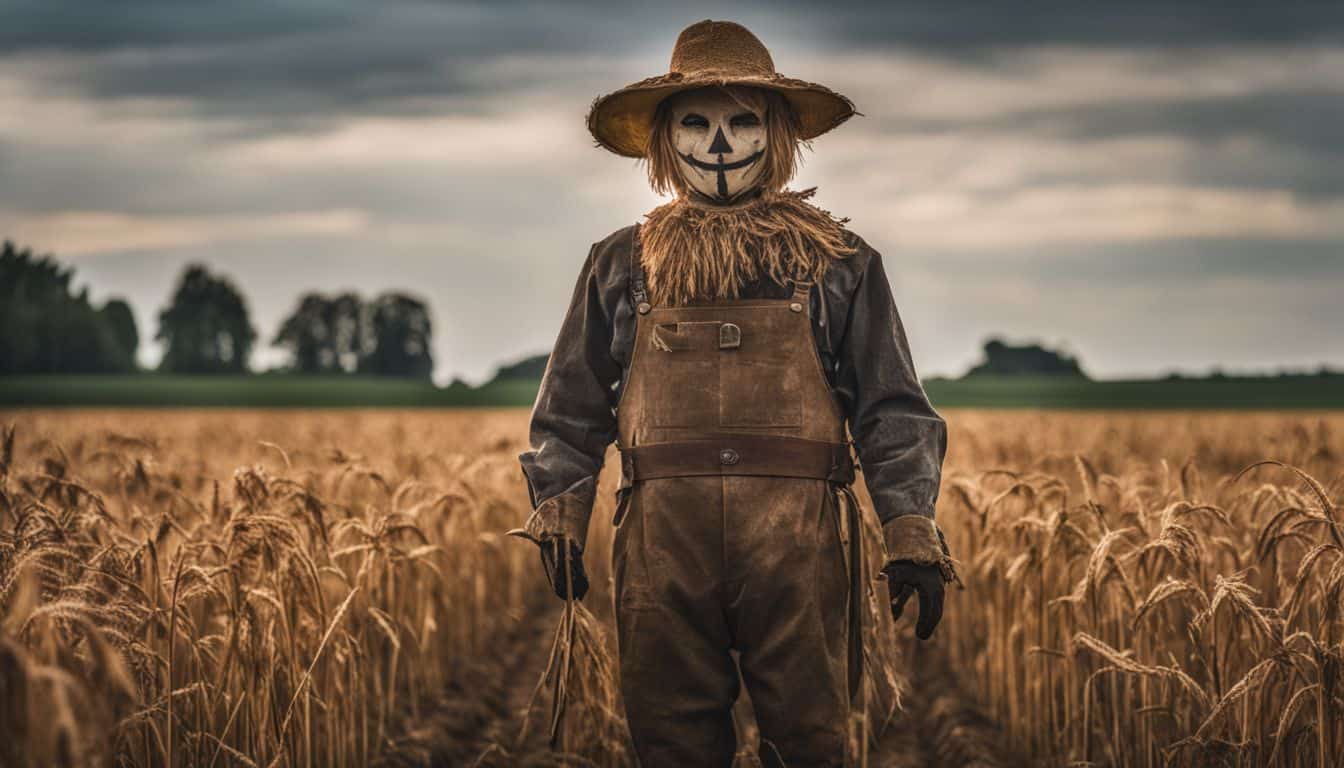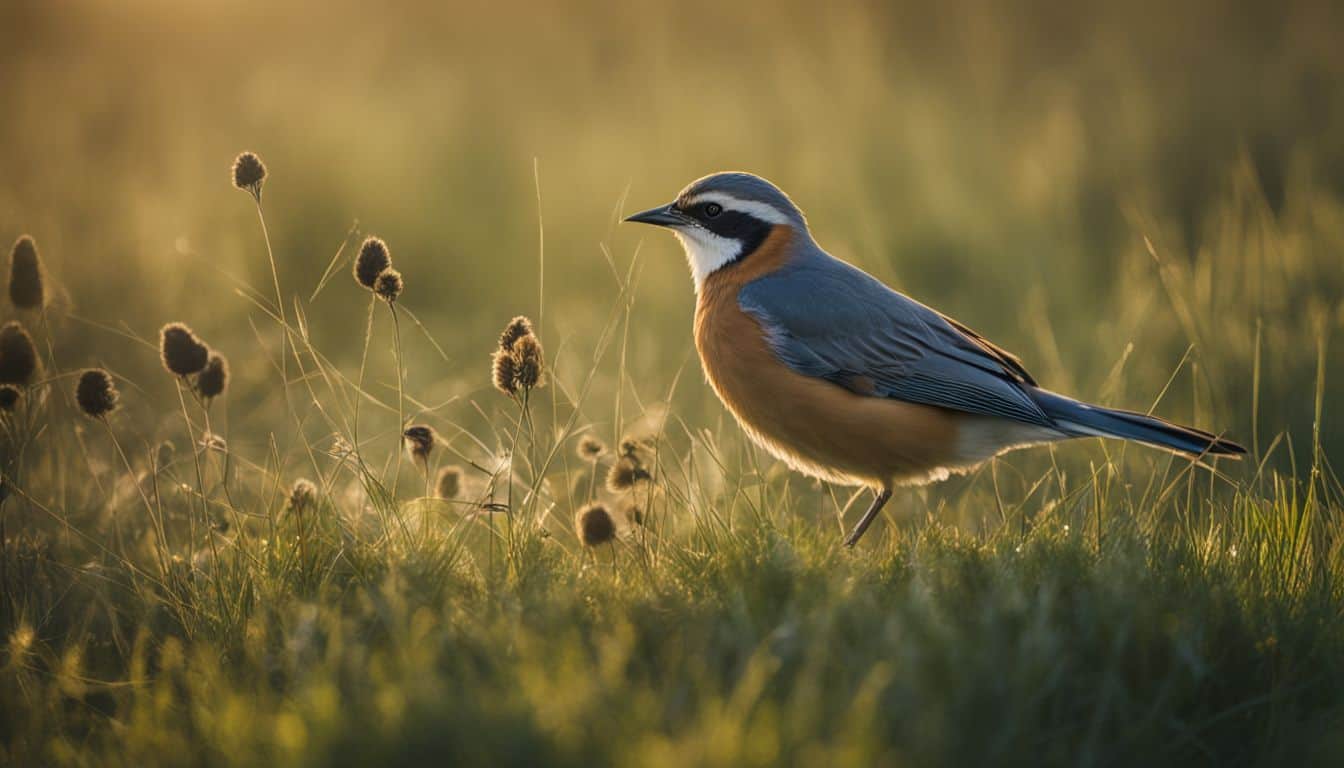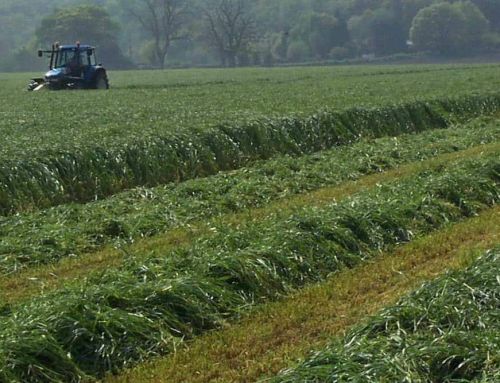Keeping your grass seed safe from the eager appetites of birds is a challenge that many gardeners know all too well. These feathered visitors, while delightful to observe, can make short work of your newly sown lawn before it even has a chance to sprout.
Addressing this issue requires thoughtful solutions that protect our avian friends whilst ensuring your garden’s growth remains uninterrupted.
I am Billy Nimmo, the proud founder of Idealseed. With three decades of experience in the realm of grass and wildflower seeds, I’ve nurtured Idealseed into becoming a shining example of excellence and innovation throughout Europe.
My passion for gardening and commitment to quality have equipped me with effective strategies to shield your grass seed from birds without causing them any harm. Let’s embark on this journey towards a flourishing garden together.
Key Takeaways
- Hang shiny CDs or strips of foil to scare birds away with their reflections and sounds.
- Use fine mesh netting to create a barrier that prevents birds from reaching the grass seed.
- Offer birds alternative food like birdseed in a different area of your garden, diverting them from the grass seed.
- Cover newly sown seeds with straw, mulch, or garden fleece for protection while helping them grow strong and healthy.
- Select grass seed varieties less appealing to birds, such as fescues and ryegrasses.
The Problem of Birds and Grass Seed
Birds pose a challenge when it comes to grass seed. Sparrows and pigeons, among other birds, can eat the seeds or damage them while searching for food. This affects the successful growth of grass and wildflower seeds.
Identifying Seed-Eating Birds
I’ve spent years watching my garden and have seen pigeons, sparrows, and finches drop by. These birds look for one thing: seeds on the ground. They peck at any seed they find, which is a problem for someone trying to grow grass or wildflowers from seed.
I’ve learned you can tell these seed-eaters apart by their actions and what attracts them.
Pigeons are big and walk around more than they fly when eating. Sparrows are smaller with brown feathers; they love hopping around quickly as they eat. Finches come in various colors, but they’re unique because of how tiny they are compared to pigeons and sparrows.
Each bird has its way of finding food, making it clear which ones are after my grass seeds.
Effective Strategies to Deter Birds from Grass Seed
To deter birds from grass seed, use visual barriers, auditory deterrents, scare tactics, and diversion feeding strategies. For more tips on preventing birds from eating grass seed, continue reading.
Visual Barriers Against Birds
I hang shiny CDs and bits of foil around my seeds. The light bounces off, scaring birds away. This trick is easy and works well. I also use fine mesh netting over the area where I spread grass seed.
Birds can’t get through it to eat the seeds. It’s a simple method that keeps your seeds safe until they grow.
Another thing I do is put fake owls and hawks near my garden. These scarecrows look like real predators to small birds looking for a snack. They stay away, thinking danger is nearby.
Combining these visual barriers means less worry about losing seeds to hungry birds. It’s all about making your seed bed less inviting to them without harm.
Auditory Deterrents for Bird Control
Hanging CDs and foil on strings makes noise that birds don’t like. This simple trick can keep them away from your grass seed. It’s easy to do and works well in gardens.
Unusual sounds, like those from wind chimes, scare birds.
Sounds made by devices are also good at keeping birds from eating seeds. Using bird of prey sounds scares smaller birds away, making sure they don’t come near the seed you spread on your lawn.
Scare Tactics: Bird Scarers and Fake Predators
I use fake birds of prey in my garden to scare away smaller birds that eat grass seeds. These pretend predators look like hawks or owls. I place them around the area where I’ve spread the seed.
Click here to preview your posts with PRO themes ››
It tricks other birds into thinking there’s danger nearby, so they stay away.
Another trick is using a scarecrow. This old method still works well for me. I dress it up to look like a human and move it around every few days. Birds think someone is in the garden and fly off to find a safer place to eat.
Both ways help keep my seeds safe until they grow into strong plants.
Diversion Feeding Strategies
After setting up fake predators and bird scarers, another way to keep birds away from your grass seed is using diversion feeding strategies. You give birds their own food somewhere else.
This makes them less likely to eat the seed you put down for your lawn. A smart move is to place bird feeders filled with seeds they like, such as sunflower seeds or fat balls, away from the area where you’re growing new grass.
This trick keeps them happy and full.
You can also sow extra grass seed – about half more than what you need. Think of it as giving some seed to the birds on purpose so they leave the rest for your lawn to grow well.
This method is simple and doesn’t cost much but works well in keeping birds busy while allowing your seeds to sprout without harm.
Protective Measures for Grass Seed
Protective Measures for Grass Seed:
Cover your grass seeds with straw or mulch to shield them from curious birds and other wildlife. Use fine mesh netting to create a barrier that keeps the seeds safe while allowing them to grow undisturbed.
Straw or Mulch Coverage for Seed Protection
Covering grass seed with straw or mulch is a smart move. It hides the seeds from birds and keeps them moist. This helps seeds grow faster and stronger. Think of it as a blanket for your seeds, giving them warmth and protection until they can stand on their own.
A layer of straw or mulch acts like a shield, guarding young shoots against hungry birds.
We also use garden fleece to wrap our precious seeds. This not only guards them but warms the soil too, making seeds sprout quicker. With these covers, our lawn gets ahead without losing seeds to birds.
Quick Germinating Seeds to Outpace Birds
I use quick germinating seeds like fast grass or quick start seeds in my lawns. They grow faster than usual, so birds don’t eat them all before they sprout. This trick helps the new grass get ahead of hungry birds looking for a snack.
Another thing I do is sow extra seeds. I throw down half as much again, thinking some will feed the birds and some will grow into grass. This way, both the birds and my lawn are happy without overdoing it or causing a mess with too many seeds in one spot.
Fine Mesh Netting to Shield Seeds
When dealing with the problem of birds eating grass seed, using fine mesh netting can be very effective. This strategy creates a physical barrier that stops birds from reaching and consuming the grass seeds.
Fine mesh netting works well to shield the seeds and protect them from bird interference. It’s a recommended protective measure for ensuring that your grass seeds remain safe from bird damage.
I’ve seen firsthand how fine mesh netting provides an excellent solution to keep birds away from grass seeds. The physical barrier it creates is highly effective in safeguarding the seeds, ensuring they have a better chance of germinating undisturbed by bird activity.
Bird Repellent Varieties of Grass Seed
To keep birds from eating grass seed, there are special grass seed varieties that act as repellents to birds. These seeds have a bitter taste or specific scent that deters birds from munching on them.
Click here to preview your posts with PRO themes ››
By sowing these bird-repellent seeds in your lawn or garden, you can protect the grass seed from being eaten by birds, ensuring better germination and growth.
Using bird-repellent grass seed is a simple yet effective strategy to safeguard your newly planted areas from avian intrusion. It’s like putting up a “no entry” sign for the birds, preventing them from causing damage to your freshly laid grass seed.
This way, you promote healthier and fuller lawns without worrying about bird interference.
Garden Fleece for Seed Preservation
Garden fleece is a great way to protect grass seed from birds. It warms the soil, helping grass seeds grow quickly when you sow them. This method keeps rain in while keeping birds out of your seeds.
Plus, it’s affordable and easy to use.
Now let’s talk about protective measures for grass seed…
Polythene Sheeting as a Physical Barrier
Polythene sheeting is the top choice for protecting grass seed. It’s rated 10/10 in terms of effectiveness. When I use polythene sheeting, my seeds are safe from birds and other threats.
With polythene sheeting, you can create a physical barrier that shields your grass seed from harm. This method has been proven to be highly effective, ensuring your seeds stay protected until they have grown strong enough to withstand bird interference.
Incorporating this protective measure into your grass seeding strategy can significantly increase the success rate of new growth. By utilising polythene sheeting as a physical barrier, you’re taking a proactive step towards safeguarding your grass seed and promoting healthy lawn establishment.
Seeding Practices in Lawn Maintenance
Ensuring healthy lawn maintenance involves proper seeding practices. For a lush and vibrant lawn, it’s vital to carry out annual overseeding. Read more about this to maximise your grass seed success.
The Importance of Annual Overseeding
Annual overseeding is crucial for maintaining a healthy and vibrant lawn. It helps fill in bare patches, improves the overall density of the grass, and enhances its ability to withstand environmental stresses such as drought and foot traffic.
Additionally, it introduces new grass varieties that are more resistant to diseases and pests, improving the overall resilience of the lawn. By overseeding annually, you can ensure that your lawn remains lush, green, and attractive throughout the year.
Moreover, this practice contributes to a more sustainable turf by reducing soil erosion and minimising weed invasion.
In terms of benefits from annual overseeding:
– Overseeding helps maintain the health and vitality of a lawn.
Selection of Bird-Resistant Grass Seed Varieties
When choosing grass seed, considering bird-resistant varieties can help protect your lawn from unwanted feathered guests. Selecting seeds that are less appealing to birds can be a strategic way to maintain the integrity of your lawn and reduce the need for extra deterrents.
Choosing Grass Seed Less Appealing to Birds
When selecting grass seed, opt for varieties that are less appealing to ground-feeding birds. Look for seed mixtures that contain types of grass known to be less attractive to birds, such as fescues and ryegrasses.
These species have tougher seeds that are harder for birds to crack open, making them less desirable targets for bird feeding.
Consider using a mixture of different grass species instead of relying on just one type of seed. This diversity can make the overall mix less appealing to specific bird species known for targeting certain types of grass seeds.
By creating a blend with various textures and sizes, you can decrease the attractiveness of your lawn’s seed supply to unwanted avian guests.
Tips for Bird Deterrence and Grass Seed Safety
To keep birds away from grass seed, try using reflective objects and sounds as deterrents. Alternatively, you can provide alternative feeding to distract the birds without harming your grass seed.
Reflective Objects and Sounds as Deterrents
I hang CDs and shiny foil strips to scare birds away from my grass seeds. The moving reflections and sounds make them feel uneasy, so they stay away from the seeds. It’s easy and keeps my seeds safe!
Click here to preview your posts with PRO themes ››
Alternative Feeding to Distract Birds
To keep birds from eating grass seed, a simple and effective method is to provide them with an alternative source of food. By scattering birdseed or other types of bird-friendly food in a different area of your garden, you can lure the birds away from your grass seed.
This diversionary feeding strategy can help protect your grass seed without harming the birds.
It’s surprising how well this method works. By offering something else for the birds to feast on, they are less likely to go after your precious grass seed. Plus, it’s a cost-effective way to safeguard your lawn without using any harmful chemicals or deterrents.
FAQs
1. What types of birds are common grass seed eaters?
2. How can I protect my grass seed from birds?
3. When is the best time to overseed a lawn for optimal health and vitality?
Let’s now cover some frequently asked questions about bird control and grass seeding practices that will help you maintain a healthy and robust lawn while keeping pesky birds at bay.
Conclusion
After reading this blog, you’ve learned savvy ways to keep birds from eating your grass seed. Visual barriers, like hanging CDs or foil strips, can deter the feathered pests. Auditory deterrents, such as recordings of bird predators or unusual sounds, also work effectively.
Additionally, setting up decoy feeding areas can divert birds’ attention away from the grass seed. By implementing these strategies and protective measures for your grass seed, you can ensure a flourishing lawn without unwanted avian interference.
FAQs
1. What can stop birds from eating my grass seed?
Using bird repellent grass seed or covering the seeded area with straw mulch helps protect your lawn from birds.
2. Are there any grass types that birds don’t like?
Yes, planting bird-resistant varieties such as certain rye grasses can deter doves and pigeons from eating the seeds.
3. How does scarifying help keep birds away from my lawn?
Scarifying removes dead material, allowing you to evenly distribute bird food away from newly seeded areas, reducing attraction.
4. Can I use anything else besides straw for covering seeds?
Mulching with materials other than straw, like specially designed covers, also protects grass seed without attracting unwanted birds.
5. Is it necessary to provide alternative food for birds?
Offering bird food in a different part of your garden distracts them from the seeded area, aiding in your grass seed protection strategy.

I’m Billy Nimmo, founder of Idealseed. For over 30 years, I have worked in the grass and wildflower seed industry in the UK. My journey started with a vision to make Idealseed a leader in quality and innovation. We achieved this goal through hard work and embracing new technology.
My company is independent and licensed by the Scottish Government and The British Society of Plant Breeders. This shows our commitment to high standards and fair prices. We blend tradition with innovation to produce top-quality seeds. Our seeds thrive in tough environments, proving our success.
I lead a team at Idealseed that shares my passion for excellence. With their support, we have become known across Europe as a leading provider of grass and wildflower seeds. We focus on quality first and are always looking for ways to improve. Our approach combines traditional methods with modern science.
Over these years, I’ve guided Idealseed with clear values: quality, innovation, and sustainability. Our work helps lands flourish across the UK. With every seed mix we create, we aim for excellence. This dedication has shaped our company’s journey from an ambitious idea to a trusted industry leader.









